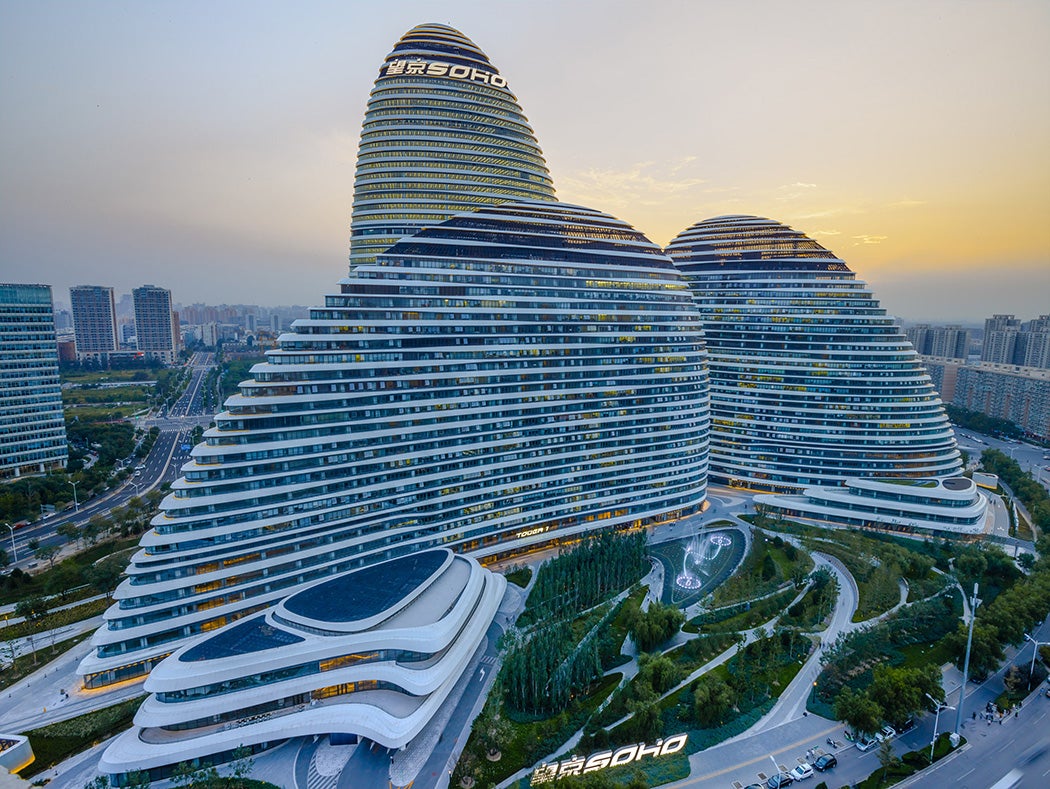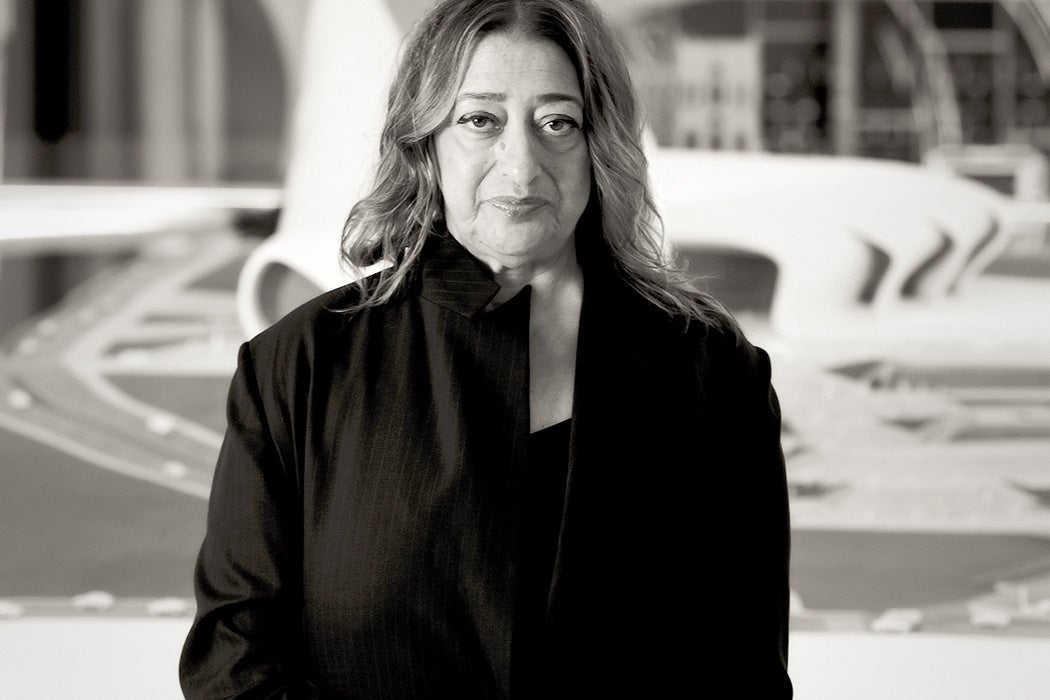This month marks seven years since the unexpected passing of the British-Iraqi architect Zaha Hadid, at what was undoubtedly the height of her historic career. Her influence on international architecture can’t be overstated. She was part of a generation of architects who both redefined and invented the forms that would characterize contemporary design. And as an Arab woman garnering international fame, she challenged “who” an architect could be.
Hadid was born in Baghdad, Iraq, in 1950. She grew up in a cosmopolitan household that was engaged in both politics and the arts. She realized her interest in architecture at an early age and, later in life, connected it to childhood visits to Sumerian cities in the south of Iraq. In the 1970s, Hadid studied mathematics at the American University in Beirut, Lebanon, before moving to London to study architecture at the Architectural Association School of Architecture. There, her work was shaped by her interest in Russian avant-garde movements. After graduation, she spent a few years working at Office of Metropolitan Architecture (OMA), an architectural firm founded by Rem Koolhaas and Elia Zenghelis, both of whom were former professors of hers. In 1980, Hadid founded Zaha Hadid Architects and began clearing her own path in the field.
Hadid created architecture that didn’t look like what architecture was expected to look like. Her designs embraced angular forms and swooping lines straight out of Modernist paintings. These were quite different from the rectangular forms so central to architectural design. She argued for these new forms—and a rejection of how architecture had been designed in the recent past—through a short discussion of randomness and arbitrariness published in 1982. She saw her own work as containing randomness, which holds both logic and forethought. Those are characteristics not found in arbitrariness. She argued that
[a]rbitrariness has to do with a generation which has been brought up on shopping for ideas. A catalogue exists from which they freely copy anything and apply it with little relevance to any situation.
She drove home the point with a declaration that architects of her time had “responsibilities far greater: we must create a new dynamic of architecture in which the land is partially occupied. We must understand the basic principles of liberation.”

Hadid’s first built project, the Vitra Fire Station in Weil am Rhein, Germany, exemplifies how she used unconventional forms in her work. Constructed in the early 1990s, the small, two-story structure stretches tightly and narrowly across the land it occupies. Sharp, angular forms jut out into space. It feels like a moment of action frozen in time.
Over the years, Hadid’s forms softened, with edges losing their sharpness and evolving into curves and rolls. In correspondence with Mohammad ‘Aref, she described the curving forms of the Heydar Aliyev Cultural Center in Baku, Azerbaijan, as allowing the structure to blur the boundaries between the architecture and the topography. Today the forms of her architectural designs are iconic. We can experience them across the globe, from Europe to the Middle East to Asia.
Hadid would say on multiple occasions, “I never thought of myself as a role model.” But she became a role model to many by simply pursuing the career she wanted. She was a prominent woman globally recognized and in demand for her designs. She was an Iraqi known for her abilities as an architect and not for being from a country regularly portrayed negatively in Western media. But, as noted by ‘Aref, Western portrayals of Hadid’s Iraqi heritage are often limited to three simple words: “born in Baghdad.”

This metonym was never far from Hadid’s understanding of her place in architecture, as she reflected that “being an Iraqi after the Gulf War didn’t help” her career take off. Yet, her heritage is central to her work and her designs. As ‘Aref explains, Hadid “[did] not consider belonging to the Arab region some sort of stereotypical label, but rather a part of the influence of the East and Islam on her and on world architecture as a whole.”
Weekly Newsletter
Hadid knew the rich history of architecture from the Arab world that had long influenced Western architects, and she placed herself and her work within that context.
In 2004, Hadid became the first woman to be awarded the Pritzker Architecture Prize. She’s part of the small club of only six women who have been awarded the prize to this day. The work she designed toward the end of her career—Wangjing SOHO, Innovation Tower, Dongdaemun Design Plaza, the Nanjing International Youth Cultural Center—was grander and more celebrated than ever before and yet, it was also mainstream. The architect who had found herself as an outsider in her field came to be a leading figure in twenty-first-century architecture.







